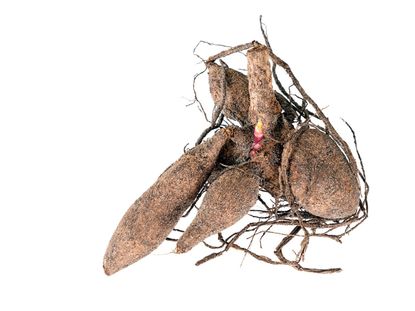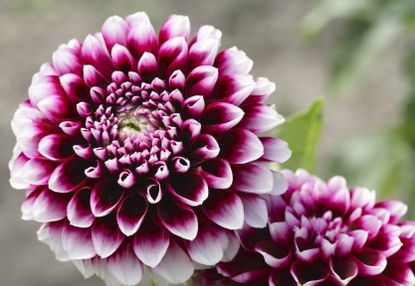Dahlia Flowers
Dahlia flowers are popular plants grown in the garden. They come in many forms and colors but nearly all grow from tubers that require proper care in order to return each year. Learn how to grow dahlia plants in the articles that follow. Here you will find information on caring for dahlias as well as any issues that might occur - like dahlia pests, diseases and more.
Dahlia Flowers
-
Dahlia Mosaic Symptoms – Treating Dahlias With Mosaic Virus
Your dahlia is clearly not doing well. Its growth is stunted and the leaves are blotchy and twisted. You're wondering if it's missing some type of nutrient, but nothing seems to help. Sadly, you may be witnessing mosaic virus in dahlias. Learn more in this article.
By Laura Miller
-
Dahlia Wilt Disease: How To Treat Spotted Wilt Virus In Dahlias
The spotted wilt virus in dahlias affects more than 200 species of vegetable and ornamental plants worldwide. The disease is spread only by thrips. Learn how to combat the disease and try to save your dahlia plants in this article.
By Laura Miller
-
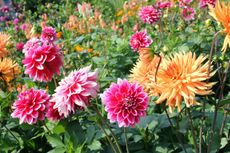
Dahlia Flower Powdery Mildew: Treating Dahlias With Powdery Mildew
By Laura Miller
-
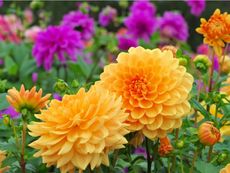
Growing Dahlia Flowers: Tips For Dahlia Planting
Love dahlia blooms? If you’re wondering how to plant dahlias in the garden, click here for some tips on dahlia plant care.
By Gardening Know How
-
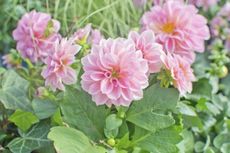
Tender Dahlia Plants – Are Dahlia Flowers Annual Or Perennial
Are dahlia flowers annual or perennial? The flamboyant bloomers are classified as tender perennials, which means they may be annual or perennial, depending on your plant hardiness zone. Learn more about dahlia plants in this article.
By Mary H. Dyer
-
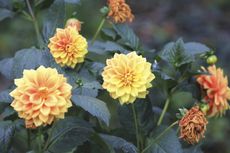
Tips On Starting Dahlia Seeds: Do Dahlia Seeds Turn Into Tubers
Dahlias are most commonly started from tubers, but you can collect seed to grow too. You will need a little patience though, as dahlia flower seeds take several seasons to produce blooms, but the effort is fun. This article will help.
By Bonnie L. Grant
-
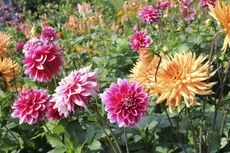
Dividing Dahlia Bulbs: How And When To Divide Dahlia Tubers
Like most tubers, dahlias will produce more tuberous roots. So can you divide dahlias? Definitively. Dividing dahlia bulbs is a simple process to make more plants and encourage the health of the existing plot. This article will help.
By Bonnie L. Grant
-
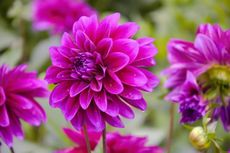
When To Water Dahlias: Tips For Watering Dahlia Plants
Since dahlia plants require some specialized care, it is important to become familiar with their needs. Among these include knowing how and when to water dahlias, which will help ensure success in the upcoming growing season. Click here to learn more.
By Tonya Barnett
-
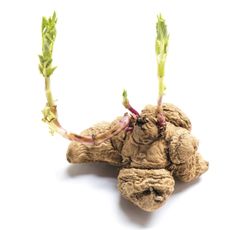
Rooting Dahlia Cuttings: How To Take Cuttings From Dahlia Plants
You can get a real bang for your buck by taking dahlia stem cuttings in late winter. Taking cuttings from a dahlia can net you five to 10 plants from a single tuber. Let's learn more about growing dahlia cuttings in this article.
By Mary H. Dyer
-
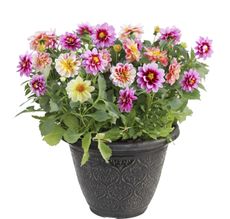
Can Dahlias Be Grown In Containers: Learn How To Grow Dahlias In Containers
Even if you have a garden, a container grown dahlia can live on your patio or front porch, bringing those gorgeous blossoms up close and personal. Learn how to grow dahlias in containers in the following article.
By Liz Baessler
-
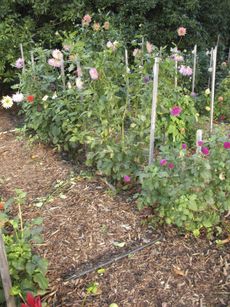
Dahlia Support: How To Keep Dahlias From Falling Over
Dahlia blooms may be as small as a quarter or as large as a dinner plate. The heavier-bearing plants need support to ensure that the blooms stay erect and out of the dirt. This article will help with supporting these plants.
By Bonnie L. Grant
-
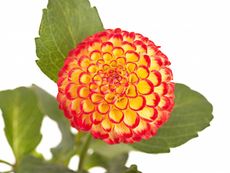
Pompon Dahlia Plants: Tips For Growing Little Beeswing Dahlias
Pompon varieties of dahlia can provide stunning visual impact in the garden, such as the cultivar, ‘Little Beeswing’ dahlia. Learn about it here.
By Tonya Barnett
-
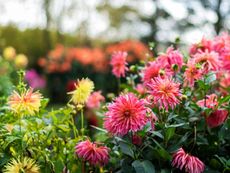
Choosing The Right Fertilizer For Dahlias
Like any beautiful, healthy life form, dahlia plants need food! Read how and when to fertilize dahlias.
By Tonya Barnett
-
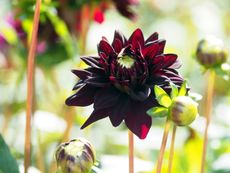
Black-Flowered And Black-Leaved Dahlia Varieties
Black dahlias can add the texture and drama to any garden. Read on to learn about black dahlia flowers and dahlias with black leaves.
By Tonya Barnett
-
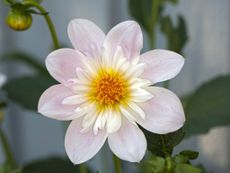
Collarette Dahlia Info – How To Grow Collarette Dahlias
Collarette dahlia varieties can easily add appeal to flower borders and cut flower gardens. Exactly what are collarette dahlias? Find out here.
By Tonya Barnett
-
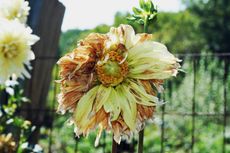
Dahlia Flower Diseases: Learn About Dahlia Disease Treatment
Dahlias aren't as difficult to grow as you may think, but proper care may prevent certain dahlia flower diseases. Learn more about a few of the most common diseases in dahlias in this article and you'll be better prepared. Click here for more info.
By Mary H. Dyer
-

Yellow Dahlia Foliage: What Causes Dahlia Leaves To Turn Yellow
Yellowing dahlia plants are common and may be caused by disease, insect infestation, improper or poor soil, or general site conditions. Find out what causes dahlia leaves to turn yellow here and save your plant from foliar distress.
By Bonnie L. Grant
